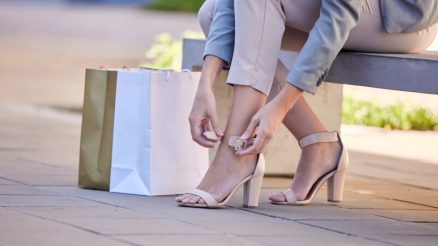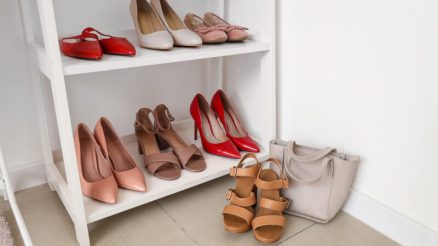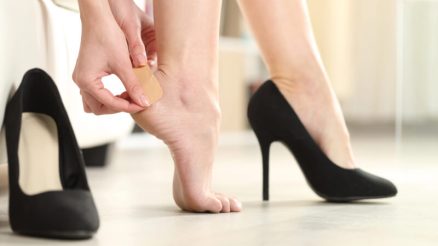High heels can be a stylish addition to any outfit, adding height, confidence, and a touch of elegance. However, the allure of those extra inches often comes at a cost to your foot health. While occasional wear might not cause significant issues, regular use of high heels can lead to a variety of painful and even long-term problems.
It’s crucial to be aware of the warning signs your feet might be sending you. Ignoring these signals can exacerbate existing conditions and lead to chronic pain or deformities. Here are some key indicators that your beloved heels might be doing more harm than good:
1. Persistent Foot Pain (Especially in the Ball of Your Foot)
This is perhaps the most obvious sign. If you consistently experience pain in your feet, particularly in the ball of your foot (the metatarsal area) or around your toes, after wearing heels, it’s a major red flag. High heels shift your body weight forward, placing immense pressure on the forefoot. This can lead to:
- Metatarsalgia: Inflammation and pain in the ball of the foot.
- Neuromas: Pinched nerves, often feeling like a burning sensation, numbness, or tingling, especially between the toes (Morton’s neuroma is common).
2. Bunions and Hammertoes
High heels, especially those with narrow, pointed toe boxes, force your toes into an unnatural position. This constant compression and misalignment can contribute to the development of:
- Bunions: A bony bump that forms on the joint at the base of your big toe, causing the toe to angle inward towards the other toes. They are often painful and can become inflamed.
- Hammertoes: A deformity where one or more of your smaller toes bends at the middle joint, resembling a hammer. This can cause corns and calluses due to friction against footwear.
3. Tight Calves and Achilles Tendon Issues
When you wear heels, your feet are in a perpetually pointed position. Over time, this can cause your calf muscles to shorten and tighten, and your Achilles tendon (the large tendon connecting your calf muscles to your heel bone) to contract.
- Tightness and Pain: You might notice your calves feel stiff and sore, even when you’re not wearing heels.
- Achilles Tendinitis: Inflammation of the Achilles tendon, leading to pain and stiffness in the back of your heel.
- Difficulty with Flat Shoes: You might even find it uncomfortable or painful to walk in flat shoes because your Achilles tendon has adapted to the elevated position.
4. Ankle Instability and Sprains
The elevated and often narrow base of high heels compromises your balance. This makes you more susceptible to:
- Ankle Sprains: A common injury where the ligaments supporting your ankle are stretched or torn due to a sudden twist or roll.
- Chronic Ankle Instability: Repeated sprains can weaken the ankle ligaments, leading to a feeling of “giving way” or instability, even on uneven surfaces.
5. Back Pain and Postural Problems
Wearing high heels alters your natural posture. To maintain balance, your pelvis tilts forward, and your spine can hyperextend, leading to:
- Lower Back Pain: The unnatural curvature of the spine puts extra strain on the lower back muscles and discs.
- Knee Pain: The altered gait can also increase pressure on your knees.
- Overall Body Alignment Issues: Over time, this can affect your entire musculoskeletal system.
6. Corns, Calluses, and Blisters
Friction and pressure are the primary culprits here. The constant rubbing of tight shoes against your skin, especially on bony prominences or between squished toes, leads to:
- Corns: Small, hard, painful bumps that develop on the tops or sides of toes.
- Calluses: Larger, hardened areas of skin, often on the ball or heel of the foot, formed as a protective response to repeated friction.
- Blisters: Fluid-filled sacs that form due to intense friction, often leading to open wounds if popped.
7. Ingrown Toenails
Pointed toe boxes can push your toenails into the surrounding skin, leading to painful ingrown toenails. This condition can cause redness, swelling, and even infection if not addressed.
What Can You Do?
If you’re experiencing any of these signs, it’s time to re-evaluate your footwear choices. Here are some steps you can take:
- Limit Heel Height and Wear Time: Opt for lower heels (1-2 inches) and reserve higher heels for special occasions. Try to alternate with flat, supportive shoes.
- Choose Wider Toe Boxes: Look for shoes that allow your toes to spread naturally, rather than being squished together.
- Prioritize Comfort and Support: Cushioned insoles and good arch support can make a big difference.
- Stretch Regularly: Incorporate calf and Achilles tendon stretches into your daily routine to counteract tightness.
- Listen to Your Feet: If a pair of shoes causes pain, don’t force it. Your feet are trying to tell you something important.
- Consult a Podiatrist: If you have persistent pain, deformities, or concerns, a foot specialist can provide a proper diagnosis and recommend appropriate treatment or preventative measures.
Your feet are the foundation of your body. Taking care of them means paying attention to the signals they send and making informed choices about your footwear. Your long-term comfort and mobility will thank you for it!








